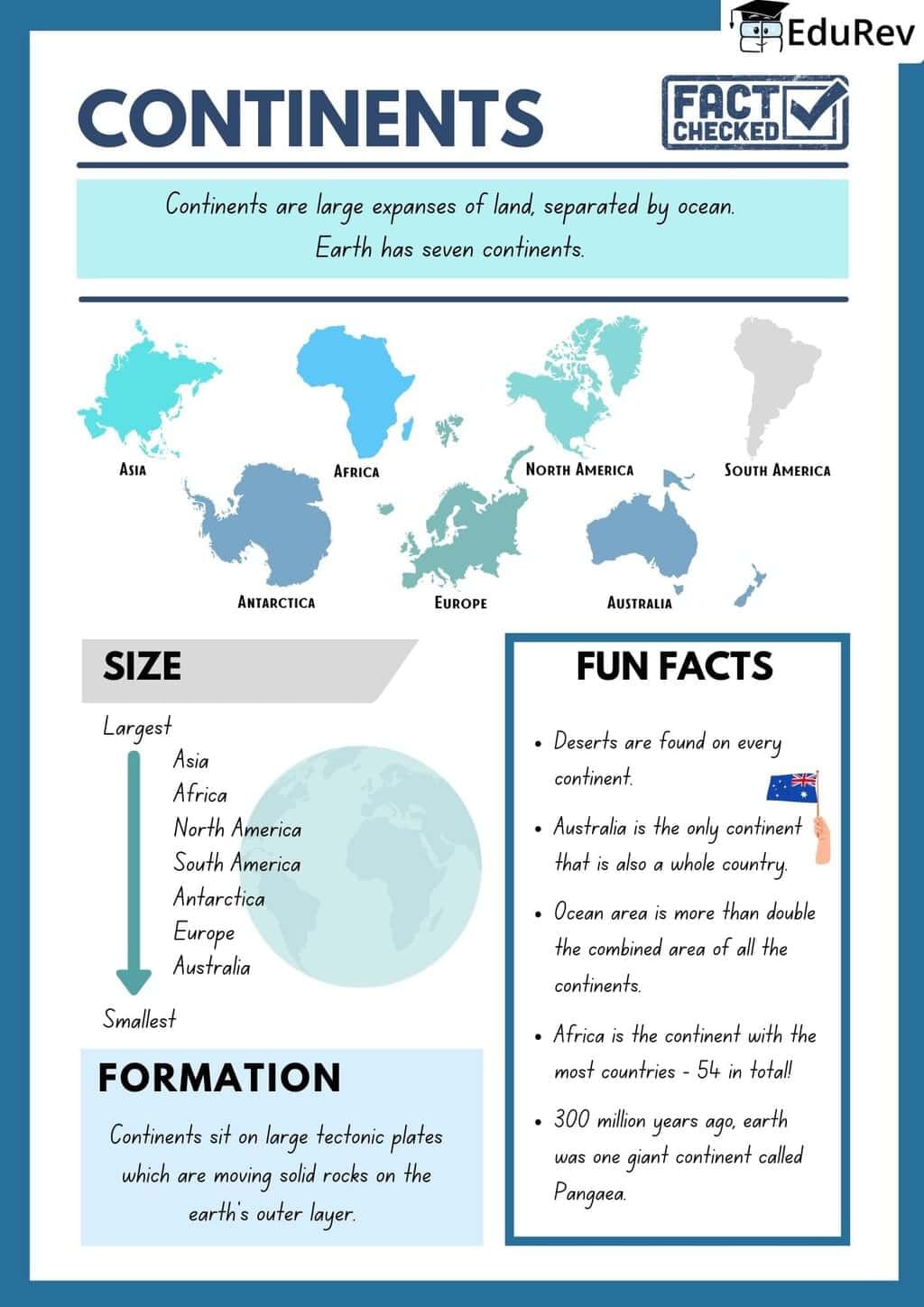Class 6 Exam > Class 6 Notes > Social Studies for Class 6 > Fun Facts: Continents
Fun Facts: Continents | Social Studies for Class 6 PDF Download

The document Fun Facts: Continents | Social Studies for Class 6 is a part of the Class 6 Course Social Studies for Class 6.
All you need of Class 6 at this link: Class 6
|
46 videos|241 docs|28 tests
|
FAQs on Fun Facts: Continents - Social Studies for Class 6
| 1. What are the seven continents of the world and where are they located? |  |
Ans. The seven continents of the world are Africa, Antarctica, Asia, Europe, North America, Australia, and South America. Africa is located to the south of Europe and Asia, Antarctica is at the southernmost part of the Earth, Asia is the largest continent located mainly in the eastern and northern hemispheres, Europe is to the northwest of Asia, North America is located to the north of South America, and Australia is a continent and country located in the southern hemisphere, surrounded by the Indian and Pacific Oceans.
| 2. What are some unique features of each continent? |  |
Ans. Each continent has unique features:
- Africa is known for its diverse wildlife and deserts like the Sahara.
- Antarctica is the coldest continent, covered in ice.
- Asia is the most populous continent and has the highest mountains, including Mount Everest.
- Europe is known for its rich history and cultural diversity.
- North America features a wide range of climates and landscapes, from mountains to plains.
- Australia is famous for its unique wildlife, such as kangaroos and koalas.
- South America is known for the Amazon rainforest and the Andes mountains.
| 3. How do continents affect climate and weather patterns? |  |
Ans. Continents significantly influence climate and weather patterns through their size, shape, and geographical features. Large landmasses can create dry areas due to rain shadow effects, while coastal regions tend to have milder climates due to ocean currents. Mountains can block winds and create varied climates on either side. For example, the Himalayas in Asia influence monsoon patterns, while the deserts in Africa can create dry conditions in surrounding areas.
| 4. How do continents contribute to biodiversity? |  |
Ans. Continents contribute to biodiversity by providing distinct habitats that support various species. Each continent has unique ecosystems that have evolved over millions of years. For instance, the Galápagos Islands off the coast of South America are known for their unique species due to isolation, while Australia has many endemic species due to its long separation from other landmasses. The diversity of climates, landscapes, and geographical features across continents fosters a wide range of plant and animal life.
| 5. What is the significance of plate tectonics in the formation of continents? |  |
Ans. Plate tectonics is crucial for the formation of continents as it describes the movement of the Earth's lithospheric plates. These movements can cause the continents to drift, collide, or separate over geological timescales. This process has led to the creation of mountain ranges, ocean basins, and earthquakes. For example, the Himalayas were formed by the collision of the Indian and Eurasian plates, showcasing how tectonic activity shapes the Earth's surface and the arrangement of continents.
Related Searches





















